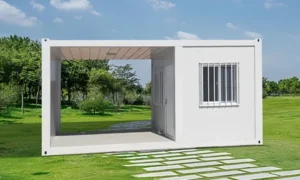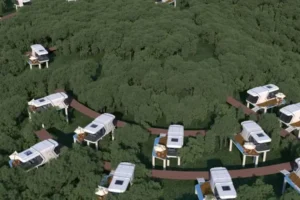Safe, Affordable, and Resilient Housing for Disaster-Prone Areas
The recent fires in California brought to light the burning issue of destruction caused by disasters. Countries are not equipped with solution to save people on a larger scale. People are always in need of services that fueled aid in recovering their damaging temporary shelters. Under these criteria, mobile homes and integrated housing systems serve the best purpose. Not only are they inexpensive, but these homes offer utmost safety.
Fire Resistance: Built to Protect
Like all mobile homes, the ones under HUD standards have a set of accessories. To meet the Construction standards associated with them, these units employ high-quality insulation and finishing to sustain their exterior. Here is a quick summary of features component of fire resistance technology.
- Fire-Resistant Materials: Mobile homes are built with fire-resistant insulation, treated wood, and non-combustible roofing materials. These features reduce the risk of rapid fire spread.
- Smoke Alarms and Safety Systems: Regulations mandate the installation of smoke detectors and, in some cases, sprinkler systems, ensuring early detection and response.
- Strategic Placement: Unlike traditional homes, mobile homes can be placed in areas with lower wildfire risk, providing an added layer of safety.
Earthquake Resilience: Standing Strong in Disaster Zones
California is not only prone to wildfires but also to earthquakes. Mobile homes are designed with seismic activity in mind, making them a robust option for disaster-prone areas:
- Anchoring Systems: Mobile homes are secured with advanced anchoring systems that prevent displacement during earthquakes.
- Flexible Structures: The design allows for greater flexibility, absorbing seismic shocks more effectively than rigid traditional housing.
Temporary and Emergency Housing: Swift Deployment
Mobile homes are a perfect solution for emergency housing needs, particularly in the aftermath of disasters. Here’s how they contribute:
- Rapid Deployment: Authorities can transport and set up prefabricated mobile homes quickly in affected areas, providing displaced families with immediate shelter.
- Customizable Features: Manufacturers can tailor these homes to include kitchens, bathrooms, and other essential facilities, ensuring comfort and functionality.
- Affordable Solutions: Compared to rebuilding traditional homes, mobile homes provide a cost-effective way to address temporary housing needs.
Case Study: Mobile Homes in California’s Wildfire Recovery
After the recent California wildfires, mobile home have been instrumental in providing shelter for displaced residents. FEMA (Federal Emergency Management Agency) and local governments have utilized mobile homes to create temporary housing communities. These homes offer a safe and stable environment, allowing families to focus on rebuilding their lives.
Why Choose Mobile Home?
If you’re considering purchasing mobile home as temporary housing or as a long-term solution, here are key benefits:
- Safety: Mobile homes are designed with fire-resistant and earthquake-resilient features.
- Affordability: They are more cost-effective than traditional homes.
- Flexibility: Easy to transport and install in various locations.
- Sustainability: Many models use energy-efficient materials, reducing environmental impact.
Conclusion
The recent California wildfires have underscored the importance of resilient housing solutions. Prefabricated container houses and integrated housing not only offer safety and affordability but also play a crucial role in disaster recovery efforts. Whether you’re looking for a temporary residence or a long-term solution, mobile home stand out as a smart choice for safety, comfort, and peace of mind.
Looking to learn more about mobile home for disaster recovery or as a permanent housing option? Contact us today for expert advice and customized solutions!
✨ Explore our high-quality products – Get a free quote instantly or a personalized custom solution tailored to your needs!
📱 Chat on WhatsApp:+86-13081655379
▶️ Watch product videos on YouTube: WeiFang Carterhouse
Start your order today and enjoy expert support!



